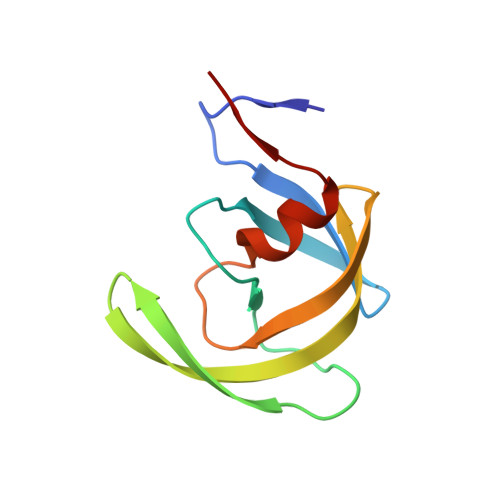Potent antiviral HIV-1 protease inhibitor GRL-02031 adapts to the structures of drug resistant mutants with its P1'-pyrrolidinone ring.
Chang, Y.C., Yu, X., Zhang, Y., Tie, Y., Wang, Y.F., Yashchuk, S., Ghosh, A.K., Harrison, R.W., Weber, I.T.(2012) J Med Chem 55: 3387-3397
- PubMed: 22401672
- DOI: https://doi.org/10.1021/jm300072d
- Primary Citation of Related Structures:
3VF5, 3VF7, 3VFA, 3VFB - PubMed Abstract:
GRL-02031 (1) is an HIV-1 protease (PR) inhibitor containing a novel P1' (R)-aminomethyl-2-pyrrolidinone group. Crystal structures at resolutions of 1.25-1.55 Å were analyzed for complexes of 1 with the PR containing major drug resistant mutations, PR(I47V), PR(L76V), PR(V82A), and PR(N88D). Mutations of I47V and V82A alter residues in the inhibitor-binding site, while L76V and N88D are distal mutations having no direct contact with the inhibitor. Substitution of a smaller amino acid in PR(I47V) and PR(L76V) and the altered charge of PR(N88D) are associated with significant local structural changes compared to the wild-type PR(WT), while substitution of alanine in PR(V82A) increases the size of the S1' subsite. The P1' pyrrolidinone group of 1 accommodates to these local changes by assuming two different conformations. Overall, the conformation and interactions of 1 with PR mutants resemble those of PR(WT) with similar inhibition constants in good agreement with the antiviral potency on multidrug resistant HIV-1.
- Department of Biology, Molecular Basis of Disease Program, Georgia State University, P.O. Box 4010, Atlanta, Georgia 30302-4010, USA.
Organizational Affiliation:




















